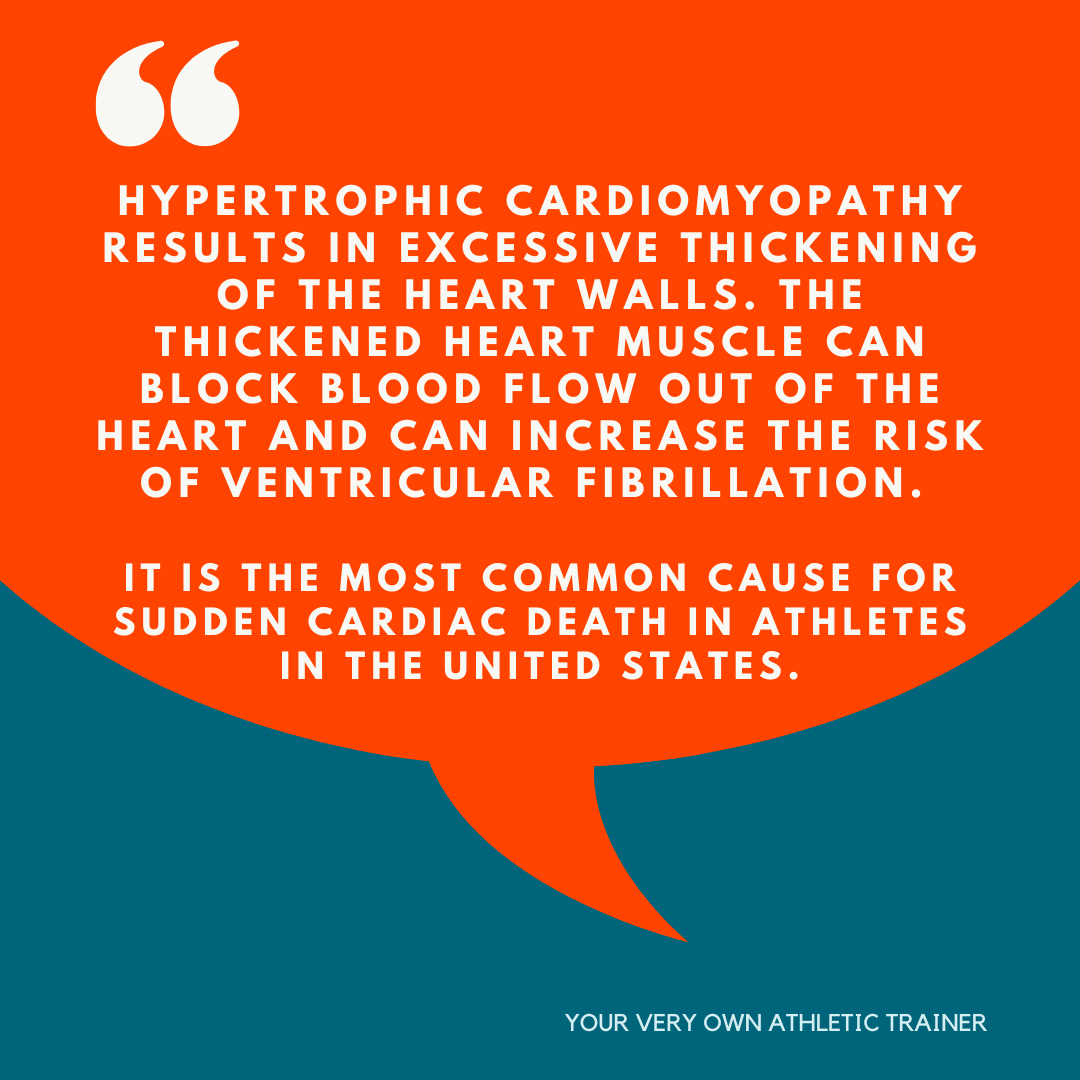Hypertrophic cardiomyopathy in a 13-year-old athlete
Earlier this summer I ran across this article in my local newspaper about a 13-year-old female softball player who had been diagnosed with hypertrophic cardiomyopathy after suffering a cardiac event after participating in a softball tournament last fall.
After the tournament, the athlete felt that her heart was racing. Numerous tests determined that she had an irregular heart beat and she underwent a cardiac ablation, but her symptoms continued. According to the Mayo Clinic, cardiac ablation uses heat or cold energy to create tiny scars in the heart to block irregular electrical signals and restore a typical heartbeat.
Once she was diagnosed with hypertrophic cardiomyopathy, a thickening and stiffening of the walls of the lower chamber of the heart that make it difficult to pump blood effectively, she was told that she wouldn’t be able to play softball again or even the activities of a normal kid like riding bikes and running around outside.
According to Parentheartwatch.org, “hypertrophic cardiomyopathy is the second most common type of cardiomyopathy and results in excessive thickening of the heart walls, usually on the left side. The thickened heart muscle can block blood flow out of the heart and can increase the risk of ventricular fibrillation. HCM is the most common cause for sudden cardiac death in athletes in the United States.”
Sudden Cardiac Arrest is different than a heart attack.
Sudden cardiac arrest is when the electrical system of the heart unexpectedly stops working appropriately.
Usually this is because of irregular and rapid quivering of the heart’s lower pumping chambers called ventricular fibrillation.
When this occurs, the heart stops beating and blood stops pumping from the heart to the brain and other organs, causing loss of consciousness.
The possibility of playing again
The young athlete and her parents decided to get a second opinion which resulted in additional testing and wearing heart monitors to track heart activity. She was then told that there was a chance that she could play softball again. A MAYBE.
She once again underwent a heart stress test, but it was determined that her hypertrophic cardiomyopathy had worsened. Her heart rate and blood pressure had gone up due to her sedentary life after being removed from softball and limiting her daily activity. Her doctors determined that low-intensity sports would be best for her overall health and her heart. Luckily for her, softball falls into that low-intensity category.
In order for her to be able to play, she requires an AED easily accessible at all times. Youth sports facilities don’t typically have AEDs on site or they are typically in places that are too far away, or hard to get to. Her travel softball team raised $5,000 to be able to buy an AED to have it on-hand for all practices and games. The team was able to purchase 2 AEDs with the money raised. Everyone from coaches, to parents, to other athletes were taught how to use the AEDs and have been AED and CPR certified.
Please know that you do not have to be certified to use an AED. The AED will walk you through exactly how to use the device, so don’t be afraid to use one if you haven’t been formally trained.
Something new that I learned while researching for this post is that if your child has been diagnosed by a physician to have a heart condition, they are entitled to have access to an AED on school grounds or field trips as part of a 504 plan or an Individual Action Plan (IEP).
Parentheartwatch.org has more resources available on this topic.
If you have a prescription for an AED but your health insurance denies coverage, contact LifeSure for help.
I found this story interesting because of all injuries that happen in youth sports, sudden cardiac arrest is still relatively rare, but has the potential for the most catastrophic outcome.
In 2022, CARES (Cardiac Arrest Registry to Enhance Survival) data from participating EMS agencies and hospitals projected a national estimate of 7389 incidents of youth cardiac arrest.
When it comes to sudden cardiac arrest, early recognition and intervention are the keys to saving a life.
I will be diving more into sudden cardiac arrest in athletes, as well as screenings and management of sudden cardiac arrest in athletes in additional posts, so be sure to check out those posts. I want to break down the information into multiple posts so it isn’t overwhelming and you can easily find the information you are looking for and it is easy to digest what you read.
I’d like to thank Parentheartwatch.org for amazing information that is easy to read and understand. They have great handouts and links to materials and other programs. I will be referencing more of their resources in future posts about sudden cardiac arrest in athletes.
If you have any questions about sudden cardiac arrest in athletes or hypertrophic cardiomyopathy, or anything else mentioned in this post, please comment below.
Disclaimer: This post is for informational and educational purposes only, does not constitute medical advice, and does not establish any patient relationship with me. I’m not liable or responsible for any damages related to your use of this information. Information given is a generality of athletic injuries and treatments and is not meant to replace traditional medical advice. Please consult a physician for proper care.







